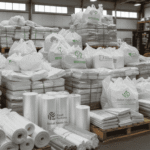
The Ultimate Comparison of Plastic, Paper, and Cotton Shopping Bags
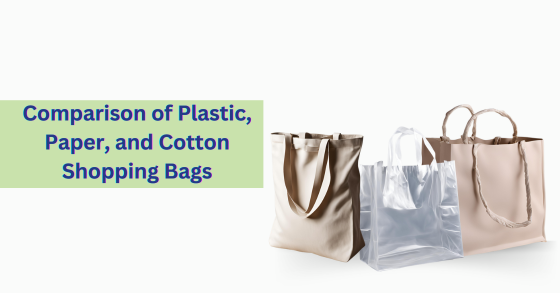
When choosing the right shopping bag for your business, the decision can feel overwhelming.
With environmental concerns growing and consumers demanding sustainable options, it becomes necessary to carefully evaluate which type of bag—plastic, paper, or cotton—is best for your business.
Each type of bag has its benefits and drawbacks, and understanding their differences is key to making the right choice. This article will break down the debate, comparing paper vs plastic bags and even including cotton bags to give you a clear picture.
The Basics of Plastic Bags
Plastic shopping bags are a common choice for many businesses because of their affordability and convenience. Despite their thin and flexible nature, they are strong, lightweight, and capable of carrying large loads. Compared to paper bags, plastic bags need less energy to produce and produce less pollution throughout the manufacturing process.
However, there are environmental concerns regarding plastic bags.
Plastic Bags Pros and Cons
The pros of plastic bags are undeniable, particularly for businesses looking to cut costs. Plastic shopping bags are cheap to produce and easy to store. They are also water-resistant, making them a practical choice for consumers carrying liquids or items that could get wet.
The drawbacks, however, cannot be overlooked. Plastic bags frequently end up as waste or in landfills, where they may take hundreds of years to break down. If not disposed of properly, they pose a major risk to ecosystems and wildlife.
When comparing plastic versus paper bags, plastic’s environmental impact is often the center of the debate. While recycling programs exist, the reality is that only a small percentage of plastic bags are recycled. Most end up in the trash, contributing to pollution.
Understanding Paper Bags
Paper bags have long been seen as a more environmentally friendly option than plastic ones. They are recyclable and biodegradable because they are made from renewable resources like wood pulp.
Paper shopping bags offer businesses a natural and rustic appeal that can align with an eco-conscious brand image. But just like plastic bags, paper bags have their own set of challenges.
Paper vs Plastic Bags Production
When comparing paper bags vs plastic bags in terms of production, paper bags require significantly more energy and water. The manufacturing process emits more greenhouse gases, which means they aren’t as green as they appear. Additionally, paper bags are heavier and bulkier than plastic bags, which makes them more costly to transport.
On the other hand, paper shopping bags decompose much faster than plastic bags and don’t pose as much of a threat to wildlife. They are also reusable to an extent, although paper bags typically wear out faster than plastic bags. For businesses, using paper bags can appeal to customers looking for eco-friendly options, even though these bags may cost more to produce and purchase.
The Growing Popularity of Cotton Bags
Cotton bags present another option for both businesses and consumers. Often marketed as reusable tote bags, cotton bags are seen as a long-term, sustainable solution. Unlike paper or plastic, cotton bags are durable and can be reused hundreds of times. They are made from natural fibers, and their sturdiness makes them ideal for carrying heavy or bulky items.
Environmental Impacts of Cotton Bags
However, despite their durability and reusable nature, cotton bags have a surprisingly high environmental impact. Their production requires enormous amounts of water, and the farming of cotton often involves heavy pesticide use. This has raised concerns about whether cotton bags are truly sustainable, especially when compared to paper versus plastic bags.
For businesses, cotton bags are typically more expensive upfront but can offer significant branding opportunities. They are often customizable and reusable, which means customers may repeatedly use them, spreading brand awareness.
Which Bag is the Most Cost-Effective?
Cost is an important factor for any business deciding between paper, plastic, and cotton bags. Plastic shopping bags are the cheapest option by far, making them a go-to for businesses operating on tight budgets. Paper bags, while more expensive than plastic bags, are still relatively affordable for companies seeking an eco-friendlier image. Cotton bags, due to their high production costs, are the most expensive option but add value for brands that prioritize sustainability and reusability.
When choosing between paper vs plastic bags or cotton bags, businesses must weigh their budget with customer expectations. While plastic bags win in terms of cost and convenience, they may not align with a company’s sustainability goals. Paper bags can be a middle ground, offering some environmental benefits while keeping costs manageable.
Branding and Consumer Perception
Consumer attitudes play a crucial role in deciding which type of bag businesses should use. Many people are becoming increasingly aware of environmental issues and prefer businesses that take steps toward sustainability. Using paper or cotton bags can help businesses communicate their commitment to eco-friendly practices. For example, paper shopping bags with a business logo can emphasize a green image while also being functional.
Plastic shopping bags, despite their drawbacks, still appeal to certain sectors of the market due to their practicality and low cost. Some businesses may choose to switch to biodegradable plastic options, which help address some of the environmental concerns while maintaining the benefits of traditional plastic bags.
The Environmental Debate
When discussing plastic versus paper bags, it’s crucial to look at the broader environmental impacts. Plastic bags, while cheap and versatile, pose long-term risks to ecosystems. Their resistance to breaking down means they accumulate in landfills and pollute oceans. On the other hand, paper bags may seem greener, but their production process is resource-intensive and not without its environmental costs.
Cotton bags, for all their reusability, have their own set of environmental challenges. From water usage to pesticide-laden cotton farming, the production of reusable bags adds to their eco-footprint. Ultimately, the best choice for the environment may depend on how these bags are used. A cotton bag reused hundreds of times could offset its production impact, while a single-use paper bag may not be as eco-friendly as it seems.
Making the Best Choice for Your Business
Choosing the right bag for your business comes down to understanding your customers, your budget, and your sustainability goals. If affordability and convenience are your top priorities, plastic shopping bags may still be the best choice despite environmental concerns. For businesses wanting to align with eco-conscious customers, paper bags offer a greener alternative without breaking the bank. And for companies that want to invest in long-term sustainability, cotton bags can add value to branding and encourage repeat use.
When considering paper bags vs plastic bags and even cotton bags, it’s important to reflect on how your choice aligns with your company’s values. Many businesses are adopting a mixed strategy, offering different bag options to customers based on their needs. No matter which type of bag you choose, educating your customers about proper disposal or reuse can go a long way in minimizing environmental impact.
Final Thoughts
The debate between plastic versus paper bags and even cotton bags isn’t as straightforward as it might seem. Each option has its advantages and disadvantages, making it essential for businesses to carefully evaluate their needs and priorities.
Whether you’re looking to reduce costs, promote environmental sustainability, or improve brand perception, the type of shopping bag you choose can make a significant impact.
By understanding the plastic bags pros and cons alongside the benefits and drawbacks of paper and cotton alternatives, businesses can make an informed decision that meets both their operational needs and the expectations of their customers.
Ultimately, the key is to strike a balance that supports both the environment and your bottom line.
Share:
Get A Quick Quote
Social Media
Most Popular

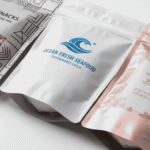
Top Ways Custom Packaging Builds Stronger Customer Loyalty
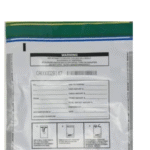
Everything You Need to Know Tamper-Evident Bank Bags
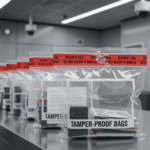
Ensuring Evidence Integrity: Importance of Tamper-Proof Bags
Categories
Tags
Related Posts
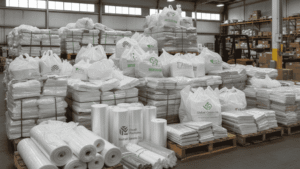
Wholesale Plastic Bags: The Cost-Effective Choice for Every Business
Every business, big or small, relies on packaging to operate smoothly. From retail stores and grocery shops to warehouses and online sellers, packaging plays a
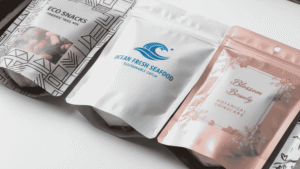
Top Ways Custom Packaging Builds Stronger Customer Loyalty
Brands today compete for attention in every possible way, but one area many still overlook is packaging. The moment a customer receives an order and
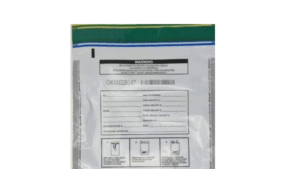
Everything You Need to Know Tamper-Evident Bank Bags
You cannot afford to take security lightly when it comes to handling money. From the moment cash is collected, picked up by the authorized person,
